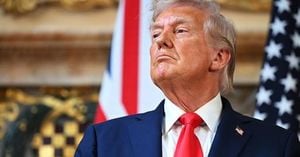Intel's ambitious plans to boost its semiconductor manufacturing capabilities have hit some bumps due to new regulations and the nature of the funding it will receive. The CHIPS Act, which has been hastily implemented since its signing over a year ago, is at the heart of Intel's endeavors and the tech giant is feeling both the weight of potential restrictions and the anticipation of fresh investment.
To break it down, the CHIPS Act, officially known as the CHIPS and Science Act, aims to revitalize the American semiconductor industry by offering financial incentives for companies to build and expand facilities within the United States. This legislation is particularly significant as the United States seeks to regain competitiveness against global rivals, particularly amid rising tensions with China. Intel, with its plans for multiple state-of-the-art facilities, is expected to be one of the primary beneficiaries of this initiative.
But there's more than excitement brewing. With the funding come strict conditions, which have raised eyebrows within the tech community. These restrictions are not just standard red tape but are seen as safeguards for national security and economic integrity. For example, companies must comply with regulations related to export controls, and there’s also the question of how profits will be used post-construction.
What’s particularly noteworthy is how Intel plans to manage these tensions between fast-tracking development and adhering to these new behavioral rules. Officials at Intel have stated they are committed to meeting the CHIPS Act's requirements but the specifics of these commitments are still something of a moving target.
Recently, the Intel CEO Pat Gelsinger made remarks underlining the urgency of their mission to diversify supply chains and reduce dependence on foreign production. While optimistic about the funding, he expressed concerns over potential delays and the effects on the economy if they are unable to meet the supply demands due to external pressures and regulations. "We must ramp up our manufacturing processes to not only succeed but to thrive amid geopolitical uncertainties," he insisted.
The tech industry isn't just sitting idly by, watching as these developments play out. Several notable industry players are weighing their options, contemplating similar funding avenues without the same constraints Intel faces. This has spurred debates about whether the CHIPS Act is creating more hurdles than it is helpful incentives.
Intel's plans include proposed expansions across the Midwest. Their largest endeavor, the $20 billion site planned for Ohio, is set to produce chips for everything from cars to computers and is touted as pivotal for the U.S.'s ambitions to regain semiconductor leadership. But opposition from local communities, concerned about environmental impacts and changes to local economies, cannot be overlooked. Areas being eyed for these facilities often raise questions about sustainability and long-term economic health.
Meanwhile, this funding rollercoaster has also caused some internal discontent, as engineers and staff are voicing their unease about how the pressures of these regulations could impact pay, job security, and project timelines. "It feels like we’re expected to run the fastest race with obstacles on the track—and we need to adapt quickly," one engineer mentioned. This sentiment is echoed across various ranks within the company.
On the other hand, the Biden administration is adamant about the stakes involved. By fostering domestic manufacturing, they aim to decrease the United States' reliance on overseas production, which became glaringly apparent during the COVID-19 pandemic when chip shortages crippled various sectors of the economy. "We're not just creating jobs; we're reestablishing our technological prowess and safeguarding our future," stated Commerce Secretary Gina Raimondo during one of her visits to semiconductor facilities.
While the challenges are clear, so are the benefits. If Intel can navigate these restrictions and leverage the CHIPS Act effectively, it could set invaluable precedents for future manufacturing initiatives across the country. The key to this will be maintaining balance: driving innovation and production speedily without sacrificing the integrity of national security protocols.
Overall, as Intel digs deep to secure its place as a leader in semiconductors, it must tread carefully. The path outlined by the CHIPS Act could serve as either the launchpad for unprecedented growth or as the minefield of operational restrictions depending on how the company chooses to maneuver through the uncharted waters of this pivotal initiative.



